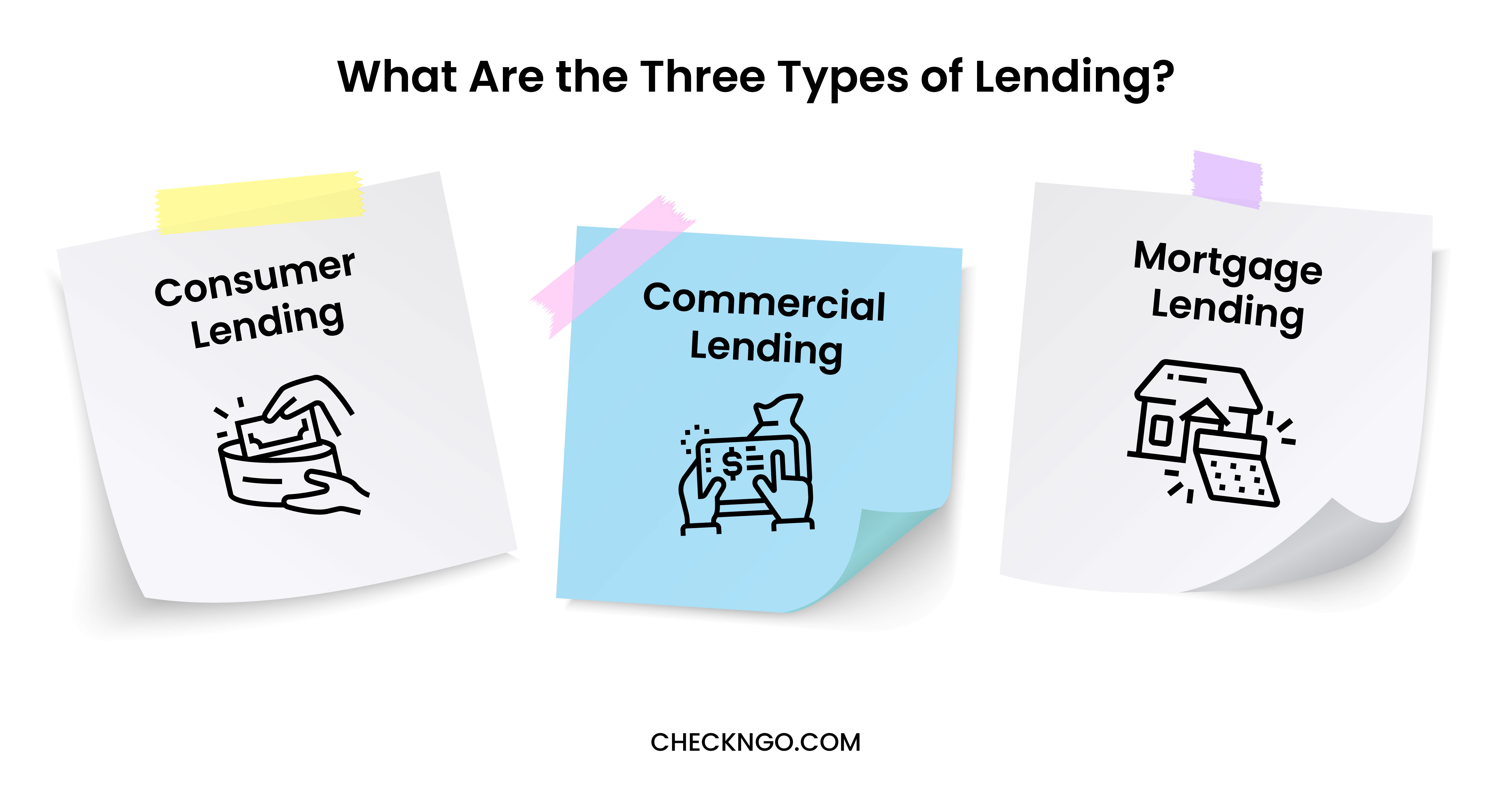Understand the key differences between the three types of lending—and how each type can impact your financial decisions.
Lending plays a big role in how people manage money—whether you’re covering a surprise expense, growing a small business, or making a big purchase. When borrowing is done wisely, it can help you move forward without draining your savings. But not all lending works the same way.
Let’s take a look at the three main types of lending: personal, commercial, and mortgage. You’ll learn what makes each one unique, who they’re for, and how they might fit into your financial plan.

1. Consumer Lending
Consumer lending is on the rise. As of Q4 2024, 24.5 million Americans have a personal loan—up from 23.5 million the year before. That’s a 4.3% year-over-year increase. While personal loan debt makes up just 1.4% of all outstanding consumer debt, it still accounts for 5.0% of nonhousing consumer debt. For comparison, credit card balances in the U.S. total $1.211 trillion, making up 6.7% of all outstanding debt.
So, what is consumer lending exactly? It refers to loans that are given to individuals for personal use—like covering medical bills, consolidating debt, or paying for home repairs. These loans are typically unsecured, meaning they don’t require collateral.
These are the types of loans and lending options most people are familiar with or use in everyday life.
- Personal loans
- Credit cards
- Auto loans
- Student loans
- Buy now, pay later plans
Key Factors in Consumer Lending
When looking at personal loans, here are a few things that usually come into play.
- Loan amount and term: Varies based on the borrower’s needs and qualifications
- Interest rates: Can be fixed or variable, often based on credit score
- Repayment schedule: Usually involves monthly payments over a set period
- Approval requirements: Often based on income, credit history, and existing debt
- Use of funds: Typically for personal expenses, not business-related purchases
2. Commercial Lending
In 2023, the value of commercial and industrial loans at U.S. commercial banks reached nearly $2.8 trillion. That’s a sign of just how much borrowing power businesses and entrepreneurs rely on to keep things moving—from covering payroll to expanding operations.
Commercial lending refers to loans designed specifically for business purposes. Unlike consumer lending, which helps individuals with personal expenses, commercial loans are meant to fund the growth and daily needs of companies.
These loans help businesses with everything from startup costs to major expansions.
- Business lines of credit
- Equipment financing
- Commercial real estate loans
- SBA (Small Business Administration) loans
- Term loans for business operations
Key Factors in Commercial Lending
Business loans are based on different criteria than personal loans.
- Business revenue and cash flow: Lenders look at how much money the business brings in
- Credit history: Both business and personal credit scores can play a role
- Collateral: Many commercial loans require assets to back the loan
- Business plan and purpose: Lenders want to know how the funds will be used
- Time in business: Established businesses often have more borrowing options than brand-new ones
3. Mortgage Lending
Even with a sluggish housing market, Americans still took on a significant amount of mortgage debt in 2024—about $1.69 trillion in new loans. In 2024, 80.3% of new mortgage debt went to borrowers with super-prime credit scores of 720 or above, while just 3.6% was given to those with scores under 620. This wide difference highlights how strongly credit history can impact your chances of getting approved for a home loan.
Mortgage lending refers to loans that are used to buy or refinance property. These loans are usually long-term and come with a structured repayment plan, often spanning 15 to 30 years.
These are the types of loans most people use to buy or refinance a home.
- Conventional fixed-rate mortgages
- Adjustable-rate mortgages (ARMs)
- FHA loans (backed by the Federal Housing Administration)
- VA loans (for eligible military service members)
- USDA loans (for rural and lower-income borrowers)

Key Factors in Mortgage Lending
Lenders take a close look at a borrower’s financial background before approving a home loan.
- Credit score: A higher score often leads to better interest rates
- Down payment: Larger down payments can reduce monthly costs and loan risk
- Debt-to-income ratio (DTI): Shows how much of your income goes toward debt
- Employment and income history: Lenders want to see stable income over time
- Property value and type: The home itself must meet certain requirements and will be appraised before final approval
How to Choose the Right Lending Option
With so many options out there, choosing the right loan comes down to understanding your needs and how they line up with the three types of lending: consumer, commercial, and mortgage. Each one serves a different purpose, so it’s important to match the loan to your goal.
If you’re covering personal expenses like medical bills or car repairs, consumer lending might be your best bet. For business growth or inventory, commercial lending makes more sense. Buying a home or refinancing? That falls under mortgage lending.
Another thing to think about is whether you need a secured or unsecured loan. Secured loans require collateral—like a car or a house—but often come with lower interest rates. Unsecured loans don’t require assets, but the rates may be higher and approval can be more credit-dependent.
No matter which loan you’re looking for, take time to compare lenders. Look at interest rates, fees, repayment terms, and the lender’s reputation. For personal and mortgage loans, consider how long you’ll be paying it back and whether the monthly payments fit your budget. For business loans, check if the lender understands your industry and offers flexible repayment options. A little research upfront can make a big difference in the long run.
Finding the Right Loan for Your Needs
Whether you're managing personal expenses, growing a business, or buying a home, understanding the three types of lending—consumer, commercial, and mortgage—can help you make smart borrowing decisions. Each loan type has its own purpose, pros, and requirements.






